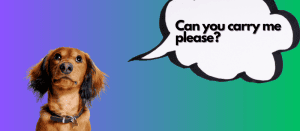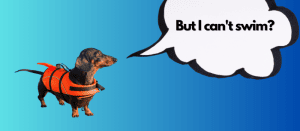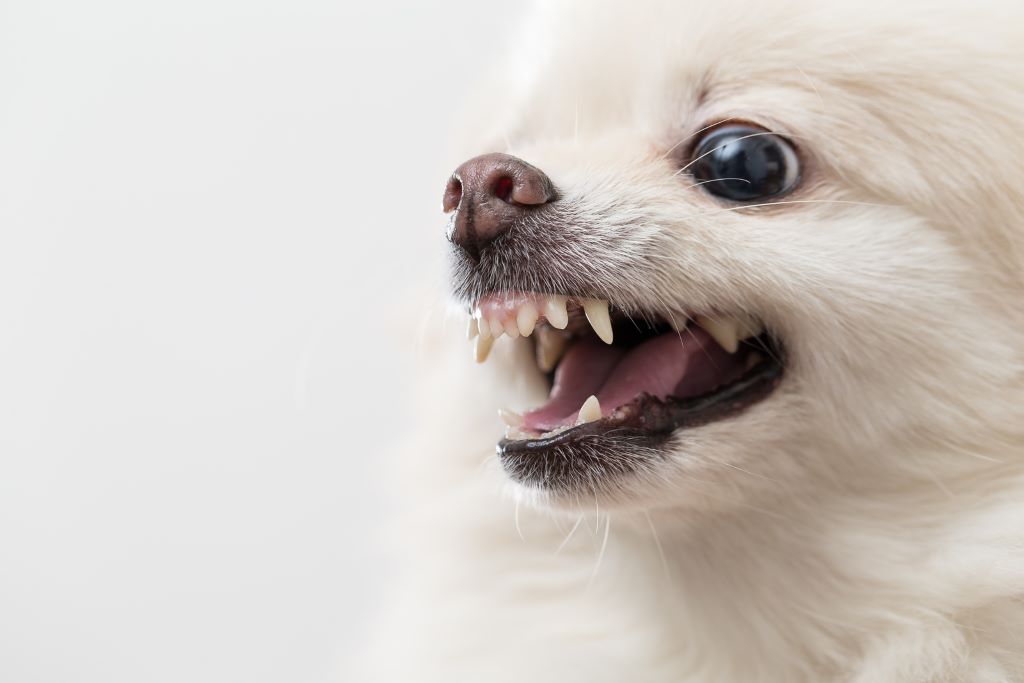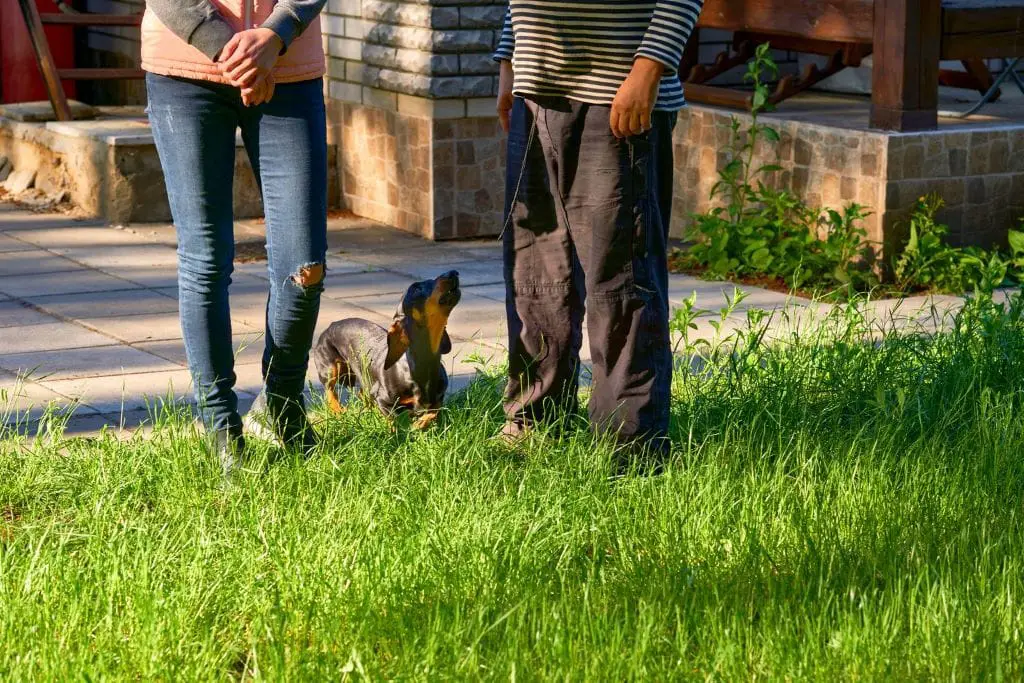Dachshunds are lively, mischievous, and often aggressive. If you’ve ever owned one, you know that the breed can be quite difficult to handle when it comes to aggression. Unfortunately, if left unchecked, your pup’s aggression can lead to serious problems that can affect your relationship with them.
But with the right knowledge and techniques, you can help them learn to control their aggression. In this article, we’ll take a closer look at the causes, symptoms, and techniques you can use to stop your pup’s aggression and help them become their best self.
You’re not alone in the fight against dachshund aggression. With the right knowledge and techniques, you can help your pup learn to control their aggression and find peace. By the end of this article, you’ll be equipped with the tools you need to help them become the best pup they can be.
Understanding the Breed
Knowing the breed can help you better understand your pup’s behavior and create an even stronger bond. Dachshunds are a popular breed due to their small size and playful nature. However, they can also display aggression, so it’s important to recognize the signs and symptoms of aggression in your pup.
To help you better understand your pup’s behavior, it’s important to remember that dachshunds are loyal, intelligent, and can make excellent watchdogs. Dog training and socialization can help curb any aggressive behaviors, as can understanding the types of aggression that dachshunds can display.
It’s also important to recognize the signs of aggression in your pup, such as growling, snapping, or lunging. With the right training and socialization, you can help your pup become a well-rounded dog and a beloved member of your household.
Symptoms and Types
Recognizing the symptoms and types of aggression can help you better understand how to address it. Dachshund aggression can manifest itself in a variety of ways, including growling, snarling, barking, lunging, snapping, and even biting.
Other signs of aggression in dogs can include stiff body posture, raised hackles, and a fixed gaze. It’s important to note that aggression can vary in intensity and is highly dependent on the situation.
It’s also important to recognize that not all aggressive behavior is the same. Some dachshunds may be more prone to possessive aggression, while others may display territorial or redirected aggression. Understanding the type of aggression your dachshund is displaying can help you better address it.
By recognizing the symptoms and types of aggression in dachshunds, you can better understand the potential causes and develop an effective plan for addressing the issue.
Common Causes
Gaining insight into the potential causes of your pup’s behavior can help you identify strategies for diffusing the issue.
Dachshunds are known to bark a lot, and this can be a sign of aggression. When your little pup barks excessively, it could be a sign that he or she is feeling threatened or is trying to warn off an intruder.
It’s important to socialize your puppy from a young age to help them learn good behavior and to avoid aggression.
Another common cause of aggression in dachshunds is feeling insecure or lacking a sense of security. If your pup doesn’t feel safe and secure, they may become aggressive as a way of protecting themselves.
If your pup is feeling scared, it can cause them to become aggressive and bark excessively. Understanding the potential causes of your pup’s aggression can help you take the necessary steps to help diffuse the situation.
Diagnosis
Diagnosing the root cause of your pup’s aggression is key to determining the best course of action for diffusing the situation. Dachshunds can be highly aggressive due to their small size and independent nature. If your pup’s aggression is escalating, it’s important to consult with a professional dog trainer to identify the underlying cause of the behavior. This ensures that proper handling techniques are used to stop dachshund aggression and help your pup overcome any behavior problems. With the right support, your pup can learn to feel safe and secure, and won’t feel the need to resort to aggression.
Moving forward, the next step is to learn about handling techniques that can be used to help manage your pup’s aggression.
Handling Techniques
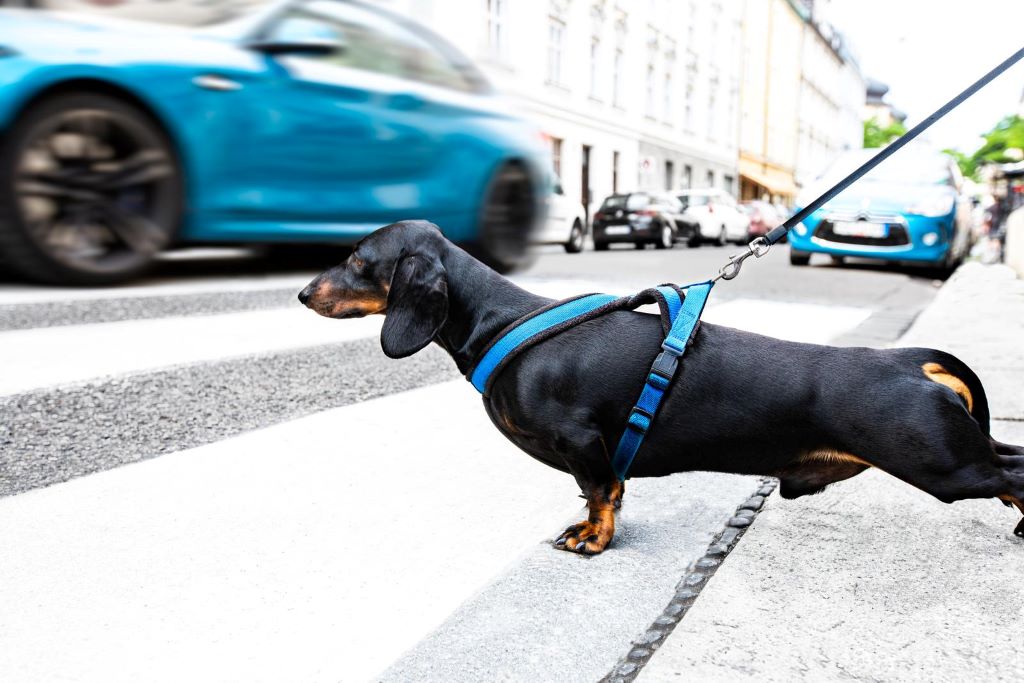
Learning the right handling techniques can help you manage your pup’s aggression and ensure a safe and secure environment. To help your dog, start by understanding the underlying cause of their aggression and make sure that your dachshund is getting enough exercise to help them stay healthy and happy.
Socializing your dachshund by introducing them to other people and animals, especially dogs, is also important. This will help them learn the acceptable behaviors of other animals and help them become more confident. Additionally, teaching your pup basic obedience commands can help you gain control of the situation if their aggression does flare up.
Remember, if you’re calm and consistent in your approach, you can help your dachshund learn how to stop their aggressive behavior. With proper handling techniques, you can make your dachshund a happier and healthier pet.
With these techniques in mind, you can move on to training tips that will help you and your pup further.
Training Tips
Developing the right training techniques can help you manage your pup’s behavior and create a safe and secure environment for them.
When it comes to dealing with dachshund aggression, one of the best things you can do is to start with basic obedience training. Teaching your pup commands such as sit, stay, and come will help them learn how to be better behaved and more obedient.
Additionally, try to give your pup plenty of exercise. This will help keep them mentally and physically stimulated, which can help reduce their aggressive tendencies. Taking your pup to doggy daycare can help give them an outlet for their energy and provide them with socialization opportunities.
With the right training and exercise, you can stop dachshund aggression and create a positive environment for your pet.
Possession Aggression
If your pup is displaying signs of possessive aggression, it’s important to take steps to address it quickly. Possessive aggression in dachshunds is caused by insecurity and a lack of discipline. They may exhibit aggressive behavior when they feel that their possessions, such as food or toys, are being taken away.
To stop your dachshund’s possessive aggression, you’ll need to establish yourself as the leader of the pack. This can be accomplished by making sure your dog obeys basic commands and curtailing any overly aggressive behavior. Additionally, you can create a system of rewards and punishments to help your dachshund understand what behaviors are acceptable and what are not.
With patience and consistency, you can teach your pup to control their possessive aggression and boost their confidence. By addressing your dachshund’s possessive aggression, you’ll be able to create a safer and more enjoyable environment for your pup.
From there, you can start to dive into the next common problem: food aggression.
Food Aggression
Food aggression can be a challenge to manage, but with the right techniques, you can help your pup learn to control their impulses. If your dachshund is displaying food aggression, it’s important to recognize the signs and take steps to correct the behavior.
You may notice that your dachshund gets aggressive when they’re eating and will bark, growl, or even snap at anyone who comes near their food bowl. Your vet can help you identify the triggers for your dachshund’s aggressive behavior and provide guidance on how to modify it.
It’s important to provide a safe environment for your dachshund to eat in and keep other dogs and people away from their food. Taking your dog to training classes can also help with food aggression, as it can teach your pup to respond to commands and be less aggressive around food.
With patience and consistency, you can help your dachshund become less aggressive when it comes to food and create a more peaceful atmosphere in your home. With the right tools, you can help your dachshund learn to control their aggression and become a more well-behaved pup.
Puppy Aggression
You can help your pup learn to manage their aggression and become a more well-behaved doggo by providing a safe environment and taking them to training classes. It’s important to address puppy aggression early on, especially with Dachshunds being known to be quite aggressive. If your pup is exhibiting signs of aggression, it’s best to seek professional help.
A dog behavior specialist can provide you with strategies to help your pup cope with their aggression. They may also recommend that your pup receive additional training or activities to help them work through any underlying issues that may be causing their aggression. By taking the time to address your pup’s aggression, you can help them become a more well-behaved dog.
Animal Aggression
Managing animal aggression can be a difficult task, but it’s important to take the time to address it. Recent studies have found that up to 78% of pet owners have had to deal with some form of animal aggression. It’s important to be aware of your pet’s behavior, especially when it comes to growling, barking, or becoming aggressive towards other animals.
Certain dog breeds, such as the Dachshund, can be especially prone to aggression due to their size and temperament. Taking your pet to a dog park can be a great way to socialize them and get them used to other animals, but you should always be aware of any signs of aggression. If your Dachshund is exhibiting signs of aggression, it’s important to address it quickly and proactively to ensure the safety of both your pet and other animals. With the right training and guidance, it’s possible to manage and even reduce animal aggression in Dachshunds.
Knowing how to recognize and address animal aggression is an important part of being a responsible pet owner. Keeping a close eye on your pet’s behavior and addressing any signs of aggression quickly can help you keep your pet and other animals safe.
Stranger Aggression
Being aware of your pet’s behavior towards strangers is essential for keeping them safe, so be sure to pay close attention to any signs of aggression. If your dachshund is overly aggressive or barks and growls at strangers, it could be a sign of aggression.
Dachshunds can be prone to aggression problems for a variety of reasons, and figuring out the trigger for the aggression can help you address the issue. Aggression may be caused by fear or discomfort, so helping them feel safe and secure can be a great way to prevent them from becoming aggressive towards strangers.
If the aggression is more serious, you may need to enlist the help of a professional to help you find the best way to address the problem and prevent your pet from biting strangers. With the right amount of patience and understanding, you can help your dachshund become more comfortable around strangers.
Owner Aggression
If your dachshund is displaying aggression towards you, it’s important to take action to address it. Dachshunds can become aggressive for a variety of reasons, and it’s important to identify the underlying cause of the aggression to effectively manage it.
Your vet can be a great resource to help identify any medical issues that may be contributing to the aggression. In addition to medical issues, dachshunds can become aggressive due to fear, anxiety, or a lack of proper training.
Working with a qualified animal behaviorist or trainer can be an effective way to help your dachshund learn proper manners and behavior towards the owner. You’ll need to be consistent in enforcing rules and stay calm when addressing the aggression.
It’s important to remember that your dachshund is not being aggressive to be mean; they are displaying this behavior as a sign of distress. By understanding the underlying cause and taking the necessary steps to correct it, you can successfully stop the aggression and create a loving and supportive relationship with your Dachshund.
Conclusion
You’ve come a long way in understanding dachshund aggression and how to properly handle it. You’ve learned the symptoms, causes, and techniques to help your beloved pup.
Imagine the look of joy and love on your pup’s face when you can take him out for a walk, free of fear and aggression. You’ll never have to worry about them snapping at strangers or other animals, and you’ll always have a loyal companion.
You both deserve this new life, free of aggression and full of love.


